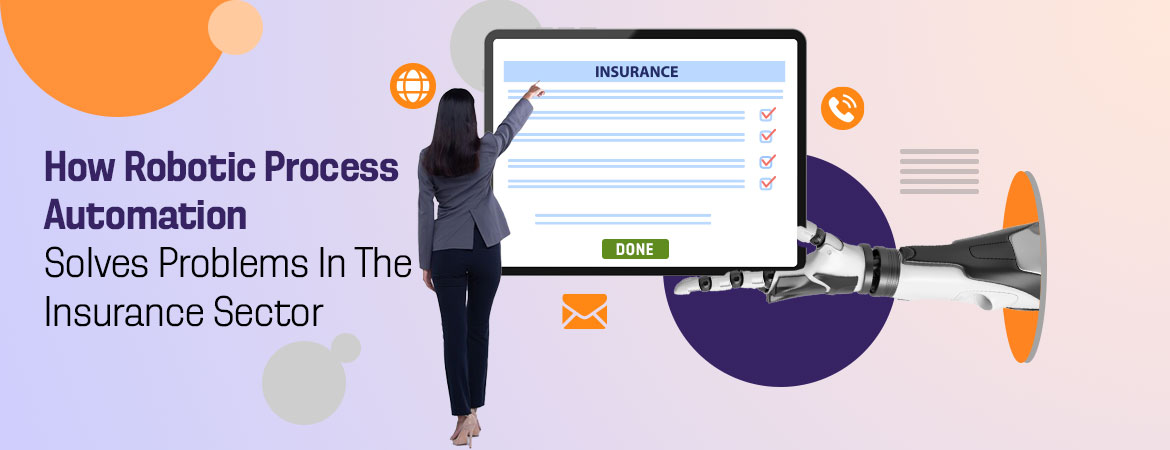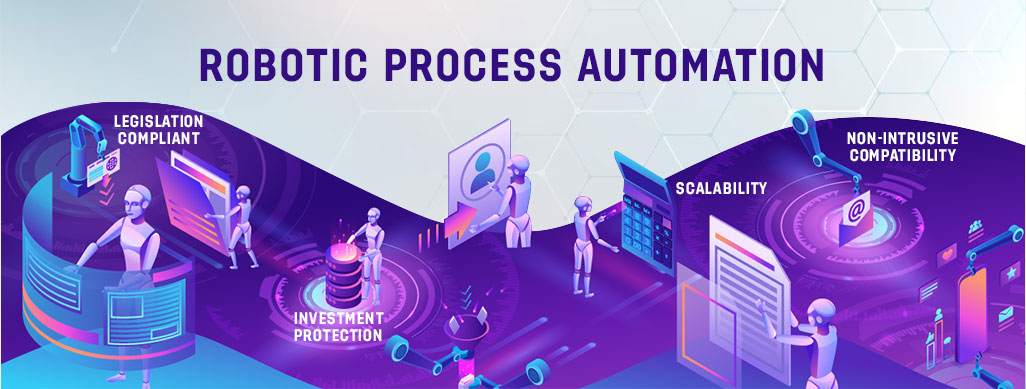
We use cookies to ensure that we give you the best experience on our website.
By using this site, you agree to our use of cookies. Find out more.
Robotic Process Automation has significantly helped insurance companies overcome various longstanding challenges by streamlining operations, reducing costs and improving compliance.

The insurance industry has been facing many challenges in recent years related to rising overhead costs, complex processes and scalability issues. At the same time, customers expect personalized services at competitive rates. Adopting new technologies is the need of the hour for insurance firms to overcome these difficulties. One such promising technology is Robotic Process Automation (RPA) which can automate repetitive, rule-based tasks across the insurance value chain. In this blog, we will discuss how RPA is helping insurance companies tackle issues around claims processing, scalability, system compatibility, regulatory compliance and protecting past investments.
The insurance sector has undergone tremendous changes with the rise of technology. Customers now demand faster, more convenient services online and through mobile apps. Importance of technology in the insurance sector are explained as follows-
In this digital era, embracing innovative technologies is critical for insurance firms to boost customer centricity, gain competitive edge and optimize business operations.
While technology opens up new opportunities, it also brings various complex challenges for players in the insurance industry. Insurance companies need to optimize processes to improve customer service levels and maximize productivity. Adopting Robotic Process Automation (RPA) can help overcome many roadblocks faced by insurers. This section explores some key challenges faced and how RPA provides solutions.

One of the major challenges for insurance firms is efficiently managing the high volume of claims received on a daily basis. The claims process typically involves collecting documents, verifying details, submitting for approvals and making payments. These repetitive tasks are well-suited for automation through RPA. By configuring software robots to extract data, navigate systems and trigger approvals, RPA is able to handle simple claims from end-to-end with little to no human intervention. This allows claims handlers to focus their time and expertise on more complex cases. By digitalizing document processing, data entry and status updates, RPA is reducing turnaround times for claims settlement. Some insurance providers have reported cutting the processing cycle from days to just hours for straightforward claims.
One of the key benefits of implementing an RPA system is the ability to quickly and seamlessly scale operations according to changing workload volumes. Since software robots work independently and can be deployed on an as-needed basis, insurers gain a flexible and elastic capacity. During peak seasons like renewal time, more robots can be allocated to process high transaction volumes without increasing full-time staff. Conversely, as workloads decrease, underutilized digital workers can be reallocated or shutdown to optimize costs. This allows insurance companies to right-size their processes instantaneously rather than being tied to permanent staffing arrangements.
Additionally, RPA reduces dependence on specialized staff. By creating centralizing robotic capacities, insurance providers no longer need to hire or train additional human resources to cope with temporary spikes in customer requests, claims or other seasonally-driven jobs. Robots ensure consistency of service levels even during unpredictable demand surges. This scalability enables companies to retain customers during heavy work periods, improving their experience while controlling expenses in the long run.
One of the major concerns around automation technologies is disruption to existing legacy infrastructure. However, RPA systems are designed to integrate and collaborate and operate seamlessly alongside existing applications without needing any changes to the latter. Software robots can be trained to utilize the same interfaces, file formats and system login credentials that employees currently use to perform daily tasks. This allows for a non-intrusive, low-risk migration path to automation. RPA absorbs routine digital work without affecting the underlying systems or processes currently in place.
As a regulated industry, compliance with legislation is imperative for insurance companies. RPA streamlines compliance workflows by automating routine audits, reviews and checks mandated by insurance laws and authorities. Software robots are programmed to accurately track and enforce all internal policies and external compliance procedures without human error or lapses. They ensure adherence to reporting timelines, content accuracy and appropriate sign-offs. Any deviations are flagged immediately for addressing. This results in near-perfect adherence and an always-up-to-date audit trail of all compliance activities.
Since robots memorize compliance protocols and rulebooks, they eliminate scope for misinterpretation by human staff. They allow more comprehensive screening against eligibility, underwriting and KYC norms at scale compared to manual reviews. Any emerging changes in regulations can also be centrally cascaded to all digital workers without room for lapses. Insurance carriers gain assurance of compliance through logs of all activities and approval journeys. This becomes invaluable while responding to authority audits or resolving customer disputes. RPA therefore helps future-proof operations against both current and future legislations.
Insurance is a heavily regulated industry that needs to adhere to various compliance protocols and legislation. Failing to comply with the regulatory guidelines can attract severe penalties and damage a company's reputation. By automating repetitive data retrieval and analysis tasks, RPA enables insurance firms to comply with regulatory requirements in a much more efficient manner. The software robots have the ability to gather accurate data from different systems related to policies, claims, underwriting etc. according to predefined rules. They can then analyze this data to check for any discrepancies or anomalies in accordance to the prevailing protocols and statutes.
RPA safeguards against human errors that can often lead to non-compliance issues. The bots perform their tasks precisely as programmed and eliminate the risks of manual mistakes. They also maintain detailed logs of all operations that can be referred back in case of any future audits. This provides insurance companies demonstrable proof of adhering to rules and processes. With RPA maintaining regulatory conformity, insurers can avoid monetary and legal troubles. Resources otherwise spent on ensuring compliance manually can now be redirected to improve other customer-facing services.
RPA has significantly helped insurance companies overcome various longstanding challenges by streamlining operations, reducing costs and improving compliance. It has simplified claims processing, made scaling easier according to business needs and integrated seamlessly with legacy systems. RPA has also ensured adherence to regulations through systematic data analysis. Existing IT infrastructure and previous software investments of insurers are better protected with RPA complementing instead of replacing existing technologies.
Overall, Robotic Process Automation has emerged as a cost-effective strategic solution for issues related to rising costs, scalability and regulations faced by the insurance industry. It is surely the way forward for insurance firms to improve efficiency and provide customers with superior experience.
Leave a Comment
Your email address will not be published.